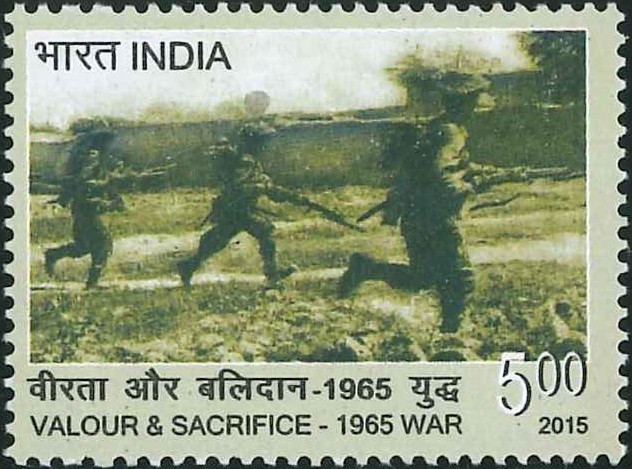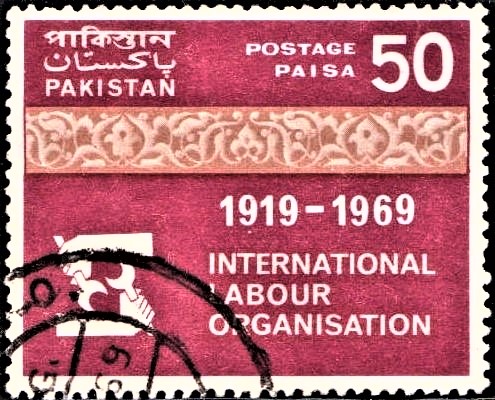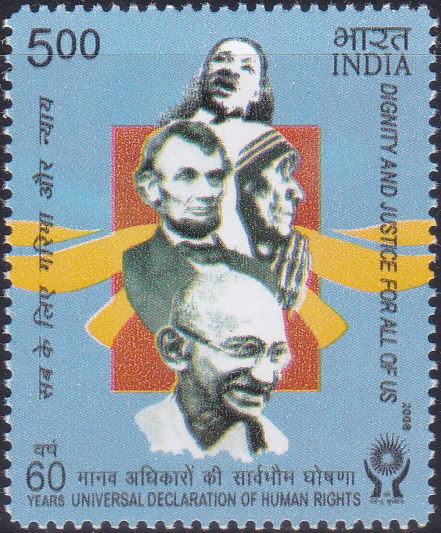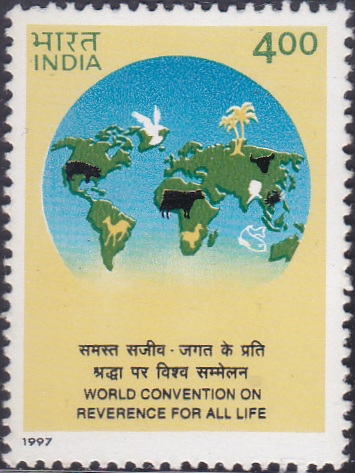
Geneva Conventions
A commemorative postage stamp on 50th anniversary of the 1949 Geneva Convention, the standards of international law for humanitarian treatment in war :
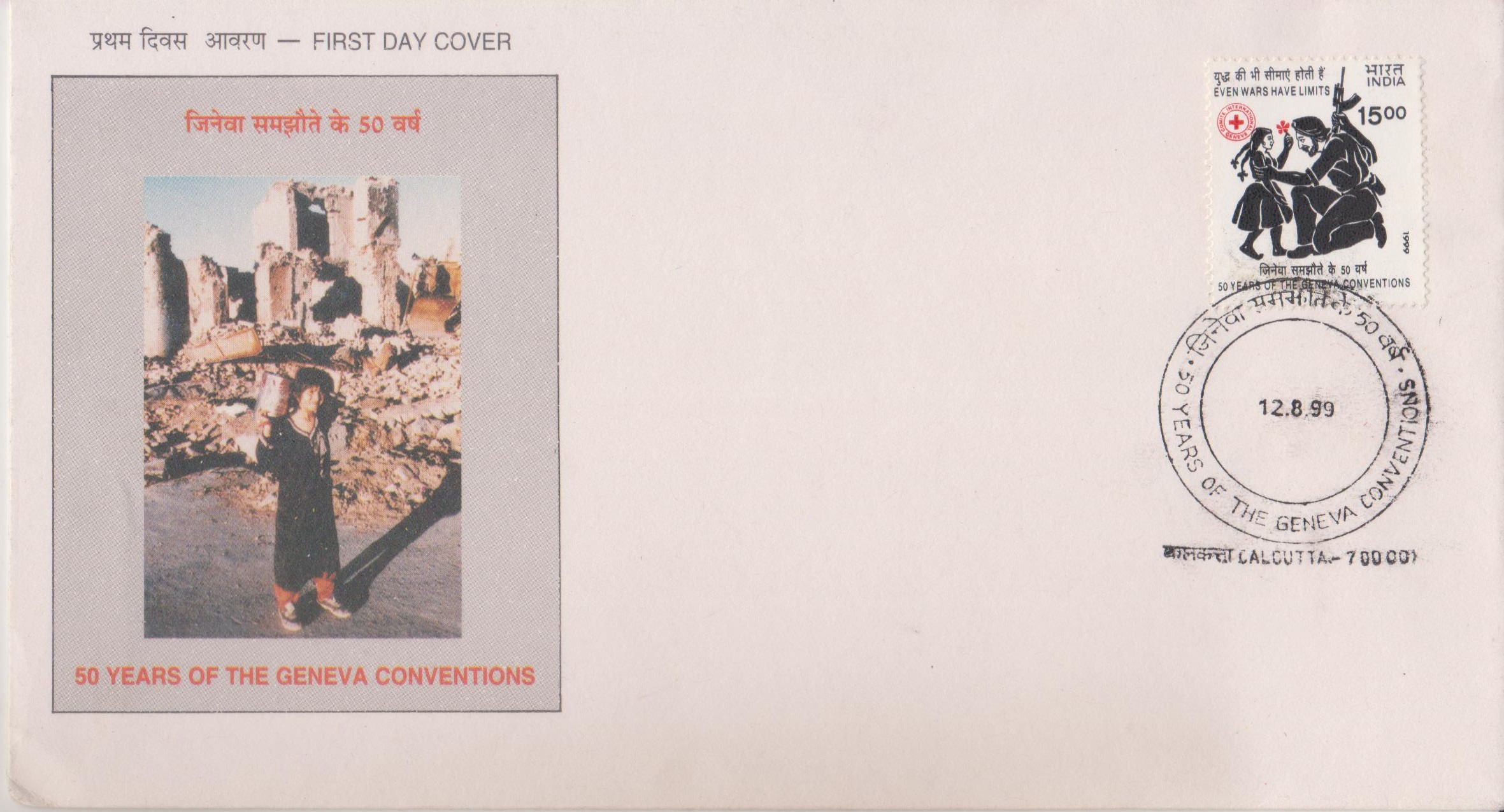 Issued by India
Issued by India
Issued on Aug 12, 1999
Issued for : The Department of Posts, is happy to commemorate 50 years of the Geneva Conventions, and India’s deep commitment to the Geneva Conventions.
Design : The design of the stamp & first day cover symbolises, the commitment of this country to the preservation of the humanitarian concerns, enshrined in the provisions of the Geneva Conventions.
Credits :
Stamp : Jatin Das
FDC : Based on photograph supplied by ICRC
Cancellation : Alka Sharma
Type : First Day Cover
Colour : Two Colour
Denomination : 1500 Paise
Overall size : 3.34 x 2.88 Cms.
Printing size : 2.99 x 2.53 Cms.
Perforation : 13 x 13
Paper : Imported un w/m Adhesive Gravure Coated Stamp Paper in Sheets 50.8 x 53.5 cms.
Stamps Printed : 0.7 Million
Number per issue sheet : 42
Printing Process : Photogravure
Printer : India Security Press, Nashik
About :
- India was among the first countries to sign the Geneva Conventions which constitute the most important humanitarian law treaties for defending human dignity in war and are among the most universally ratified instruments of law (signed by 188 countries). The stamp issue commemorates 50th anniversary of the revised Geneva Conventions.
- Through their provisions the Geneva Conventions aim at human survival in war and protection of human dignity in situations of armed conflict. The First Convention of the Revised Geneva Conventions of 1949 provides for protection of wounded and sick members of the armed forces, medical personnel and chaplains. The Second Convention stipulates protection of the shipwrecked, wounded and sick, medical personnel and chaplains of armed forces at sea. The Third Convention deals with protection of prisoners of war, and the Fourth, protection of civilians in enemy or occupied territory.
- India’s contribution by way of customary law to the development of the Geneva Conventions in their present form is significant and dates back to its ancient civilisation with its long tradition of respect for humanitarian values. Ancient Indian law was founded on social and sociological concepts and was an admixture of religion and ethics with legal precepts. Some of the sources of humanitarian law in ancient India were the four Vedas, their respective appendices, the Brahmanas, the Smritis, the Puranas and the Upanishads. The epics of the Mahabharat and Ramayan are of considerable importance in the evolution of humanitarian law because the references to the precepts of war, the means of warfare and treatment of combatants and non-combatants bear a startling resemblance to the modern concepts enunciated in the Geneva Conventions. Ancient Indian law made a distinction between military objects that could be the target of attack and non-military objects that could not be attacked. The distinction made between combatants and non-combatants in modern humanitarian law was recognised.
- In the post-independence period, in the situations of war imposed on India on a number of occasions, the spirit and sanctity of Geneva Conventions was fully maintained by India. In the aftermath of the 1971 war with Pakistan, India looked after 93,000 prisoners of war.
- Text : Based on materials supplied by International Committee of the Red Cross.



